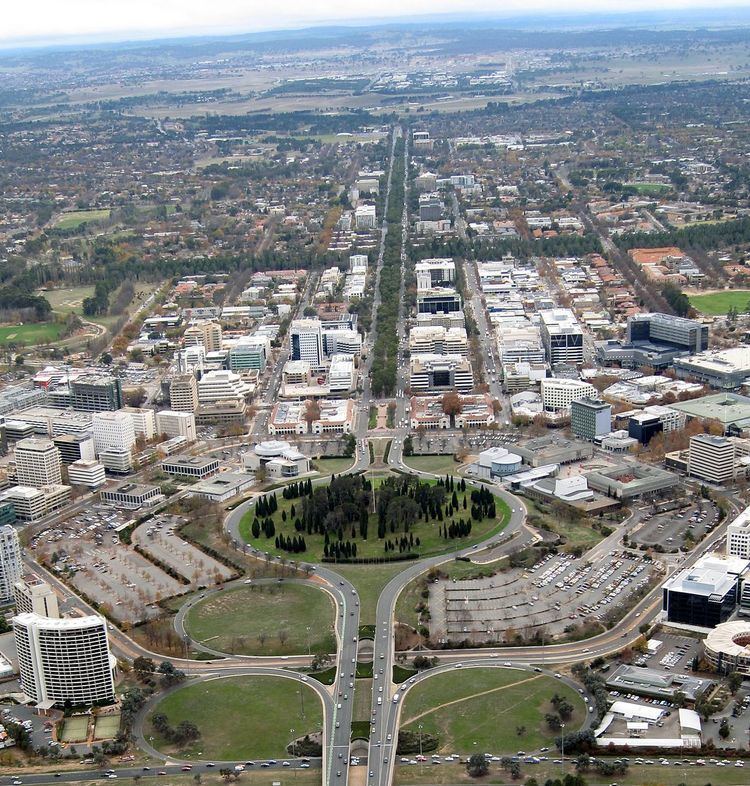Owner ACT Government Transit type Light rail Number of stations 13 | Locale Canberra Number of lines 1 Chief executive Martin Pugh | |
 | ||
Capital Metro is a light rail system under construction in Canberra - the main city of the Australian Capital Territory (ACT). The initial line is planned to link the northern town centre of Gungahlin to the city centre (Civic).
Contents
History
The construction of the light rail line was part of a deal struck between the Labor Party and The Greens following the 2012 Australian Capital Territory Election, at which Labor required Greens support to form government. In the 2013/14 ACT budget, $5 million was allocated for early design work. In September 2014, the business case was approved by the government.
The project was developed by the Capital Metro Agency. Responsibility for the project transferred to a new organisation, Transport Canberra, from 1 July 2016. The new organisation combined the Capital Metro Agency with the city's bus operator, ACTION. The line will be delivered under a public private partnership. Expressions of interest were received from the following consortia:
In March 2015, the government announced that ACTivate and Canberra Metro had been selected to move on to the Request for Proposal stage of the procurement process. The bidders submitted their final proposals for the Gungahlin to the city route on 4 September and had an additional four weeks to submit their proposals for a potential expansion of the project, from the city to Russell. The Canberra Metro consortium was announced as the preferred tenderer in February 2016 and the contract was finalised in May. Under the contract, Canberra Metro will operate and maintain the line for 20 years, after which ownership will pass to the ACT Government.
Design and construction costs are budgeted at $707 million. The Federal Government will contribute $67 million to the project. Construction of the depot commenced in July 2016 with major construction of the route itself due to begin at the end of the year. The line is due to open in 2019.
The opposition Liberal Party opposes the project. In April 2015, the party announced it would cancel any contracts for the light rail if it won the 2016 ACT election. A year out from the poll, the light rail project was already predicted to be the election's major issue. The election saw the Labor government returned, with the party claiming the result as an endorsement of the project. As predicted, the light rail project was the major issue of the campaign.
Route
The 12 kilometre line will have its northern terminus at Hibberson Street in Gungahlin, and follow Flemington Road, the Federal Highway and Northbourne Avenue to the southern terminus between Alinga and Rudd Streets in the City Centre. It will be double track for its full length. A turnback track will be located to the north of the Dickson stop. There will be 13 stops. The main bus interchanges will be located at Gungahlin, Dickson and City.
Operation
A complete journey will take around 24 minutes. The contract specifies the following minimum service levels for hours of operation and service frequency:
Fleet
CAF will build and provide twenty years of maintenance for the fleet of 14 Urbos trams that will operate the network. The trams will be 33 metres long and consist of five modules. There will be four doors on each side of the vehicle. The first vehicles are scheduled to be delivered in late 2017. A predominantly red livery will be applied. The depot will be located in Mitchell.
To Woden
The consortia participating in the procurement process for the initial line were asked to develop plans for an expanded route from the City Centre to Russell via London Circuit and Constitution Avenue. This additional 3.2 kilometre section was estimated to boost the patronage of the line as a whole by more than 30%. The proposal highlighted the desire of the Australian Government's National Capital Authority to use wire-free technology to power the trams in the areas of the city managed by the authority. The ACT Government decided not to proceed with the expanded route, however it committed to releasing a plan for a second stage of the light rail network prior to the October 2016 territory election. It was considering extending the line not only to Russell but to the broader parliamentary triangle, possibly including Canberra Airport and the Australian National University.
In July 2016, the government released a short-list of four potential routes that could form the second stage of the light rail network. The routes were:
In September, the government selected a truncated version of the Mawson route that ends at Woden as its preferred second stage project. The route is around 11 kilometres long. Tenders to design various aspects of the project were called in November. The only firm decisions the government has made about the route are that it will run from Alinga Street to the Woden Town Centre and use the Commonwealth Avenue Bridge to cross Lake Burley Griffin. Construction is planned to begin shortly after the completion of the first stage. The Australian Government will be invited to make a contribution to the project as part of its City Deals program.
Twenty-five year vision
In October 2015, the ACT Government released a plan for a city-wide light rail network that would be built over a period of twenty-five years. The plan includes the following elements:
